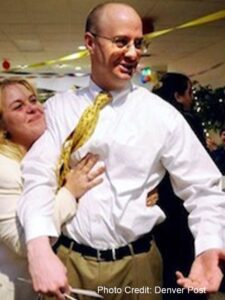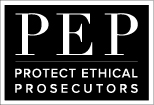Prosecutorial Misconduct Explained
Prosecutors have extraordinary power. When they abuse it, the consequences are devastating.
Prosecutors are obligated to uphold laws and protect the rights of all parties in criminal cases. With that power comes profound responsibility. When prosecutors overstep their bounds or neglect their duties, it can lead to what’s known as prosecutorial misconduct – a serious breach that can undermine the integrity of criminal proceedings. In the worst cases, prosecutorial misconduct ruins lives and denies justice to victims.
But what does prosecutorial misconduct look like? It encompasses a range of actions that can severely harm an accused person’s right to a fair trial. Below, we break down various types of prosecutorial misconduct, revealing how these violations impact justice and why understanding them is crucial.
Types of Prosecutorial Misconduct
Brady Violations
Prosecutors are required by law to turn over any evidence that could be favorable to the defense. When a person is convicted, and it’s discovered that evidence could have changed the outcome of the case, it’s called a Brady violation.

Tim Masters, pictured at his release party in Fort Collins
Simply put, this misconduct occurs when a prosecutor hides or withholds evidence that could prove a defendant’s innocence or reduce their sentence. Brady violations are a direct attack on a defendant’s constitutional right to due process — and they have led to countless wrongful convictions.
Take Tim Masters, for example. Prosecutors forced the detective assigned to the case to arrest Mr. Masters for rape and murder when they did not believe they had sufficient evidence to arrest him. They destroyed and suppressed massive amounts of exculpatory evidence pointing to the actual suspect. After a decade of wrongful incarceration, Mr. Masters’ sentence was vacated in January 2008 after DNA evidence proved he was not the perpetrator.
When this kind of misconduct is uncovered, it can result in case dismissals, new trials, overturned convictions (like Tim’s), and the release of wrongly incarcerated people. But by then, it’s too late to restore the damage done to the accused, their family, the victim, and the public’s faith in the legal system.
Misconduct in Court
Prosecutors can also commit misconduct in the courtroom. They can do this in a variety of ways, including:
- Presenting false evidence to the judge or jury
- Making improper arguments and statements during trial
- Discriminating during jury selection (also known as Batson violations)
- Threatening or bribing witnesses

U.S. Senator Ted Stevens, victim of prosecutorial misconduct
A striking example of in-court prosecutorial misconduct was seen in the 2008 trial of U.S. Senator Ted Stevens. During the trial, prosecutors knowingly allowed a key witness to give false testimony about his motivations and hid evidence that would have cleared the Senator. This deliberate deception within the courtroom severely misled the jury. Notably, PEP’s advisory board members, Brendan Sullivan and Rob Cary, served as Ted Stevens’s defense attorney in this landmark case. Ultimately, the Department of Justice uncovered the misconduct. Stevens’ conviction was overturned before he was sentenced, highlighting how in-court deceit can completely undermine justice.
Press Manipulation
Prosecutors commit misconduct when they make prejudicial public statements that unfairly influence the jury pool or sway public opinion, violating both ethical rules and the defendant’s right to a fair trial.
This can include making comments to the press about a defendant’s character, leaking evidence they know will be inadmissible in court, using sensationalized language, or publicly declaring someone’s guilt before a verdict is reached. The bottom line: the prosecutor is trying the case in the media instead of the courtroom.
This misconduct turns the Constitution on its head — replacing the presumption of innocence with a presumption of guilt. It contaminates the jury pool — especially in high-profile cases.
In the infamous Duke lacrosse case, District Attorney Michael Nifong made inflammatory and prejudicial statements to the press, declaring the defendants guilty before any trial and poisoning the jury pool. PEP advisory board members Brendan Sullivan and Rob Cary served as co-counsel for the defense. The case became a textbook example of how a prosecutor’s misconduct can derail justice, ruin lives, and undermine public trust in the legal system.
Unethical Plea Bargaining
Researchers estimate that 98% of criminal cases are resolved through plea deals, not trials. That gives prosecutors immense leverage during the plea bargaining process. Some prosecutors misuse that leverage by overcharging defendants—filing charges that are significantly more severe than what the available evidence would merit—to scare them into accepting a deal. This is known as the “trial penalty”: if you reject a plea and go to trial, you risk a much harsher sentence. This tactic is deeply coercive and unethical.

Defendants in the Beatrice Six case celebrate their exoneration. Image from Death Penalty Information Center.
Imagine someone is being held hostage. The captors offer you a deal: pay a small ransom quickly, and they’ll release the person with minimal harm. If you refuse and try to fight them or involve the authorities (go to trial), they threaten to inflict much greater harm, potentially even death, if you lose. That’s not justice. It’s coercion.
The Beatrice Six case in Nebraska tragically illustrates unethical plea bargaining. After the 1985 murder of Helen Wilson, investigators lacked leads for years. Eventually, they targeted six vulnerable individuals, including Ada JoAnn Taylor, who had cognitive limitations.
Despite weak evidence and their innocence, prosecutors pressured them with the threat of the death penalty or life in prison if they went to trial. Faced with such overwhelming coercion, Taylor and four others felt forced to plead guilty to lesser charges, even while maintaining their innocence, to avoid a worse fate. The sixth defendant demanded a jury trial and was convicted and sentenced to life in prison without parole, while the other defendants who pleaded guilty received sentences ranging from 10-50 years. Taylor served 20 years before DNA evidence ultimately exonerated all six defendants, revealing the true perpetrator.
Malicious Prosecution
Malicious prosecution happens when a prosecutor brings charges against a defendant without probable cause and with personal, political, or retaliatory motive to harm the defendant.
This type of misconduct isn’t just deeply unethical—it’s dangerous. When prosecutors target people for the wrong reasons, they turn the legal system into a weapon. If doctors or engineers behaved this way, they’d face civil liability in court. Prosecutors should be no different.
At Protect Ethical Prosecutors, we believe in accountability and transparency. Prosecutors, like any other professionals, should be held accountable when they commit misconduct. Prosecutorial misconduct ruins lives and damages public trust in the criminal legal system. Learn more about PEP’s work here.

